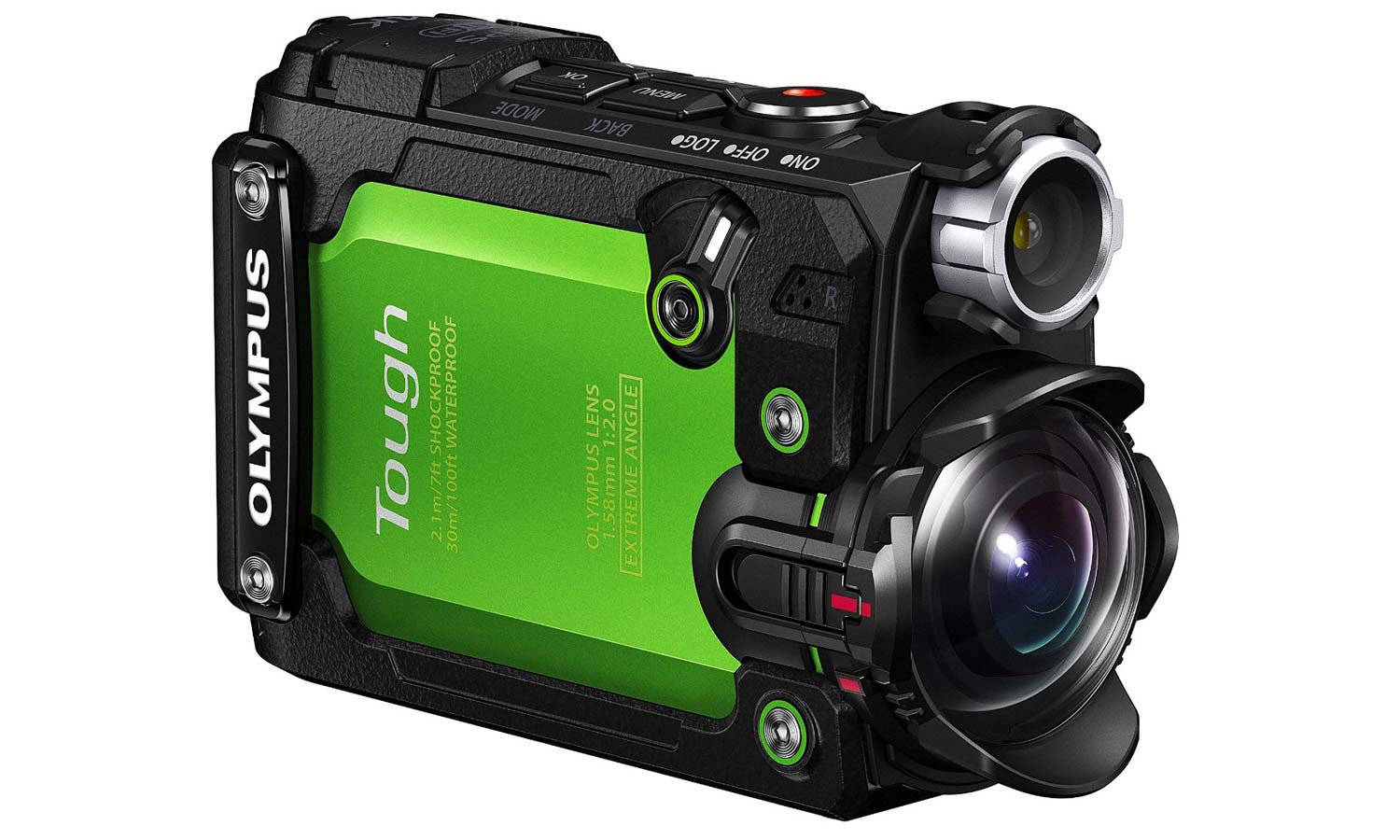Tom's Guide Verdict
With a flip-out display, a built-in light and great video quality, the Olympus TG-Tracker is a capable GoPro competitor.
Pros
- +
Good color and definition
- +
Case-free design allows audio capture
- +
Built-in 60-lumen light
- +
Fold-out monitor
Cons
- -
Awkward mechanics
- -
Hard to change field of view
- -
Occasional fog buildup on lens
Why you can trust Tom's Guide
Action cameras might be more commonly associated with extreme athletes (or wannabe extreme athletes) than with data geeks, but the $349 Olympus Tough TG-Tracker will appeal to both. While some other action cams have GPS and maybe an accelerometer, the Olympus tracks a wider range of metrics: temperature, elevation, depth, latitude/longitude, distance traveled, barometric pressure and speed. But ultimately, it all comes down to picture quality, and on this count, the TG-Tracker largely succeeds. For all of our top picks, be sure to check out our best action cams page.
Design: like a mini camcorder
If you're used to a diminutive action cam such as the GoPro Hero4 Black, the first thing you will notice about the Olympus TG-Tracker is its size and heft. At just 6.35 ounces, the Olympus is more than twice as heavy as the GoPro, and (when the GoPro is out of its rugged case) about double its size.
But there are a number of benefits that come with the Olympus' size. For one, the camera's casing is ruggedized, which means it can withstand a 7-foot fall, up to 220 pounds of force and temperatures as low as 14 degrees Fahrenheit. It's also waterproof to 98 feet (for up to 1 hour). And aside from a special lens cover (included), there is no special equipment needed to go underwater.
Also, unlike the GoPro Hero4 Black, the Olympus has a foldout display enabling two key features: video or image playback on the device, and the ability to watch what is being recorded.
Combined with the included (removable) pistol grip, the TG-Tracker looks more like a mini camcorder than a device meant for action sports.
MORE: Top-Rated Waterproof and Rugged Cameras
When I first removed the camera from its box, I mistook the bulbous lens cover for a fish-eye lens. I removed it, thinking the resulting video would make for a better comparison with the GoPro, only to find out — after taking a tumble when mountain biking and scratching the exposed lens — that it was actually just a lens protector. So don't be like me.
Wide field of view
That lens protector has to be bulbous in order to accommodate the camera's very wide 204-degree field of view (FOV). A wide FOV is a big selling point for action cameras, but I found it to be a bit much. (The GoPro maxes out at 170 degrees.)
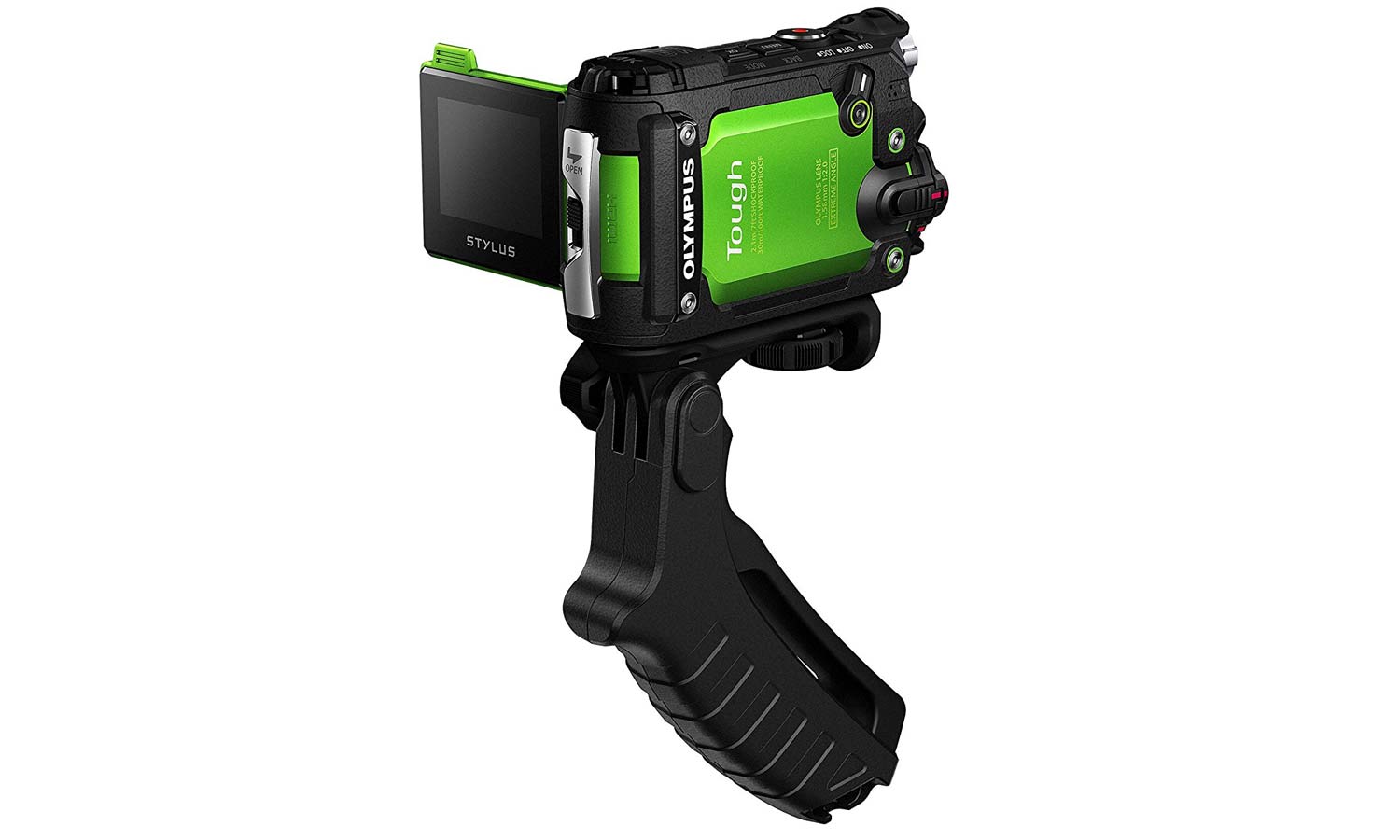
For one thing, it's hard to not accidentally get a hand or other body part in the frame while shooting. For another, it makes some features at the periphery appear rounded. Fortunately, you can narrow the FOV to 156 degrees while you shoot in the underwater mode, but changing this setting is far from intuitive. Also, the GoPro offers more FOV options for shooting at 2.7Kp, 1080p or 720p resolution.
Also, because the record/shutter location on TG-Tracker is so close to the lens, its wide field of view meant that a number of clips showed my hand reaching for the button.
I found that the lens protector fogged a bit when I was on a run along the Pacific coast (though not in particularly muggy weather), and it picked up image-distorting fingerprints pretty easily.
Image quality: excellent
Like the GoPro Hero4 Black, the Olympus Tough TG-Tracker can shoot video at 4K at 30 frames per second. I took both cameras out mountain biking and found that the Olympus footage was a bit sharper. When I moved from bright sun to shade, the Olympus video had a higher contrast; the GoPro was flatter.
Underwater
Here's an underwater clip taken in Russian River, California, in brackish water near the Pacific. Because I'm holding the camera (using the included pistol grip) and I'm right at the shore in very shallow water, the movement of the water makes the video rather unstable even with image stabilization turned on.
I did have the light turned on while shooting underwater, but I never went deep enough for it to make any perceptible difference when compared to the lightless GoPro. In fact, the underwater video quality seemed very similar from both cameras. Scuba divers, however, would likely find the integrated light to be a boon. That said, most divers already carry flashlights anyway, and the GoPro (with its case) is rated to work at greater depth: up to 131 feet.
MORE: Camera Recommendations for All Kinds of Photographers
Whereas the GoPro's case makes audio nearly impossible to pick up on land, there is basically zero audio underwater. Though it's nice to be able to hear sounds underwater with the Olympus, the air holes in the pistol grip do generate a bubbling sound that can be a bit distracting.
Still life
To take still photos, you must change a setting, and unfortunately, stills cannot be captured while the camera is recording a video (as you can with the GoPro). However, the images are decent, especially in low light, and especially compared to those taken by the GoPro.
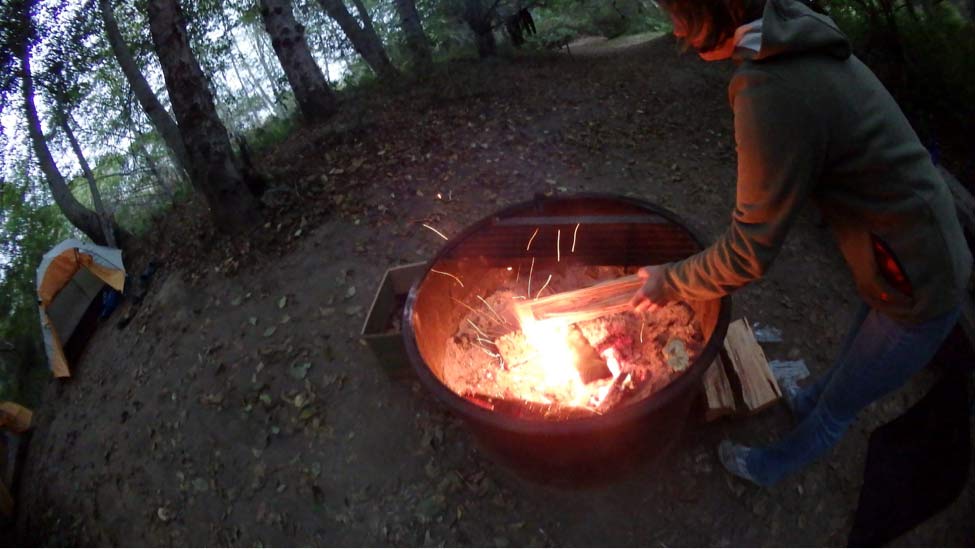
The Olympus camera uses a backscatter illumination (BSI) CMOS sensor, which captures more light than a CMOS sensor like the one found in the GoPro. This could explain the differences here in both the stills and the video output of the two cameras.
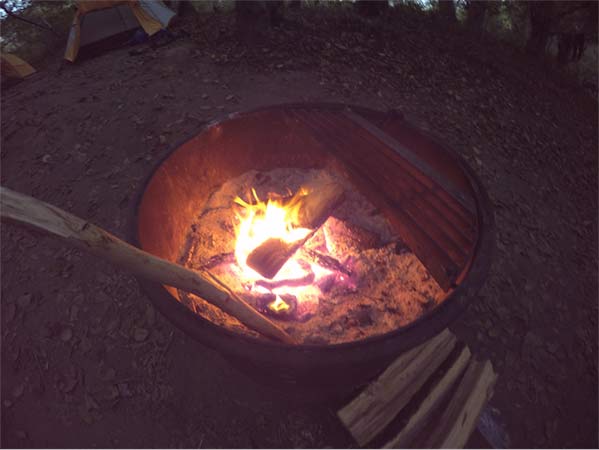
Here is a still taken with the GoPro Hero4 Black, and although it was taken earlier (and, therefore, with a bit more ambient light) than the Olympus shot, it is definitely flatter and rather washed out:
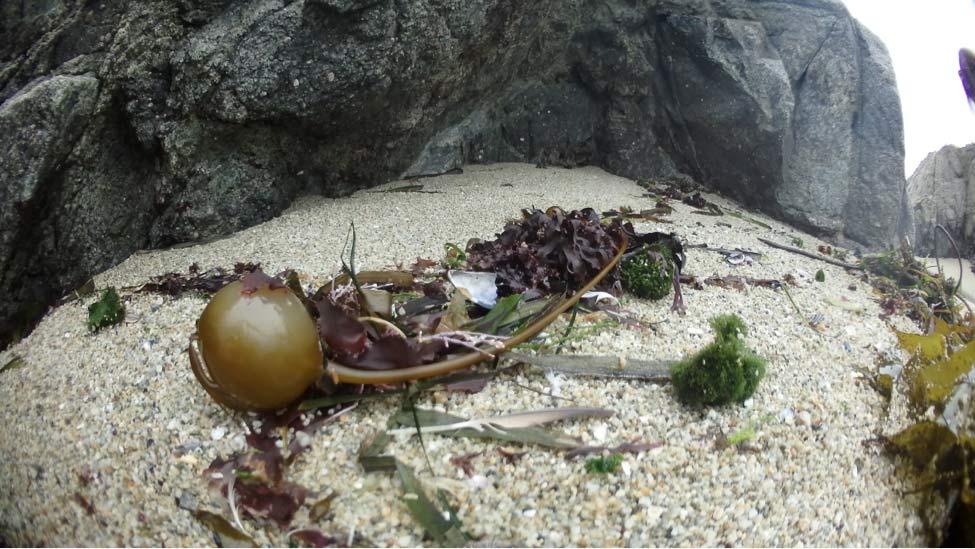
However, the 204-degree FOV does complicate near-field images. Note how the edges on this close shot of seaweed — on a flat beach — are warped:
Night ride
In this clip, the Olympus camera is handlebar-mounted and records a nighttime ride, with an almost-full moon that did not make any perceptible illuminative impact on the video.
Image stabilization: helpful
You can turn the TG-Tracker's five-axis image-stabilization feature on or off. When we compared images taken on a mountain bike ride from this camera to those taken with a GoPro Hero4 Black, which does not offer image stabilization, there was not a great deal of difference between the image stability on the two cameras. It is worth noting, however, that the Olympus was moving laterally much more than the GoPro, because the former was mounted on the handlebar (really the only option, due to its size and wide FOV), whereas the GoPro was mounted on the fork. This result implies that the Olympus' stabilization feature did, in fact, make the video output more stable than the video from the GoPro.
However, during a run on a short section of a trail with and without the TG-Tracker's image stabilization, the limitation of this feature became obvious. With stabilization on, the center of the video — but not the periphery of the camera's 204-degree field of view — was far more stable than when the feature was turned off. You will see what I mean in the following video. The first part of this clip shows no stabilization, and the second (starts at 0:26) shows the stabilization on.
App
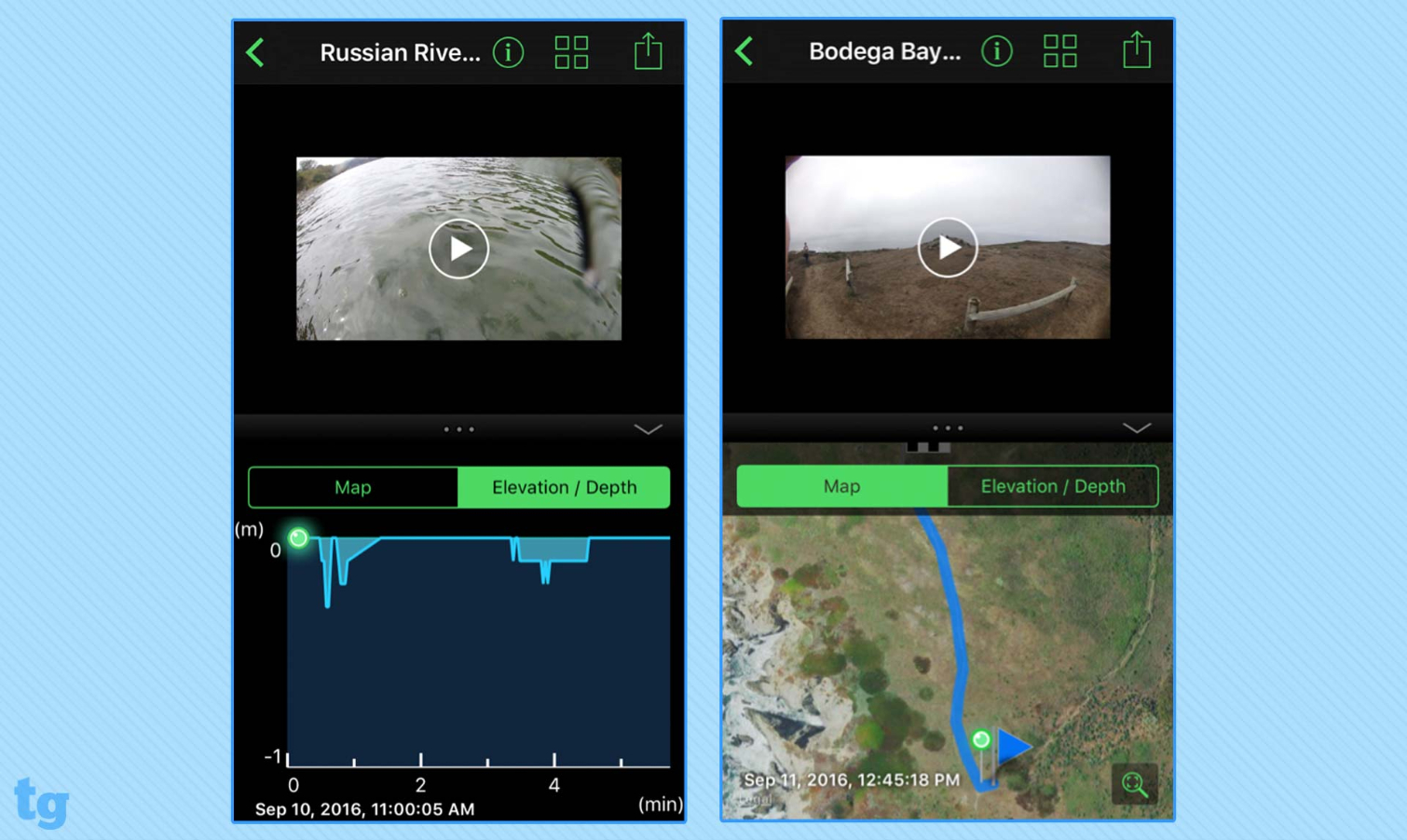
As sensors continue to become more affordable, compact and power-efficient, it's likely that we'll see more action cameras sporting all of these advanced features. Until that happens, however, there will be few options for digesting and using all of that data. So, for now, there's no way to pair that rich environmental data with a video or image viewed through a third party, such as YouTube. You can, however, view video paired with the sensor data in the OI.Track app.
MORE: Best Action Cameras
Battery life: pretty long
I shot about 18 short videos (about half a minute to 4 minutes in length) over the course of a weekend, with and without the light turned on; took roughly two dozen images; and spent a fair amount of time monkeying with the settings. That exhausted roughly half of the camera's 1,350-mAh lithium-ion battery.
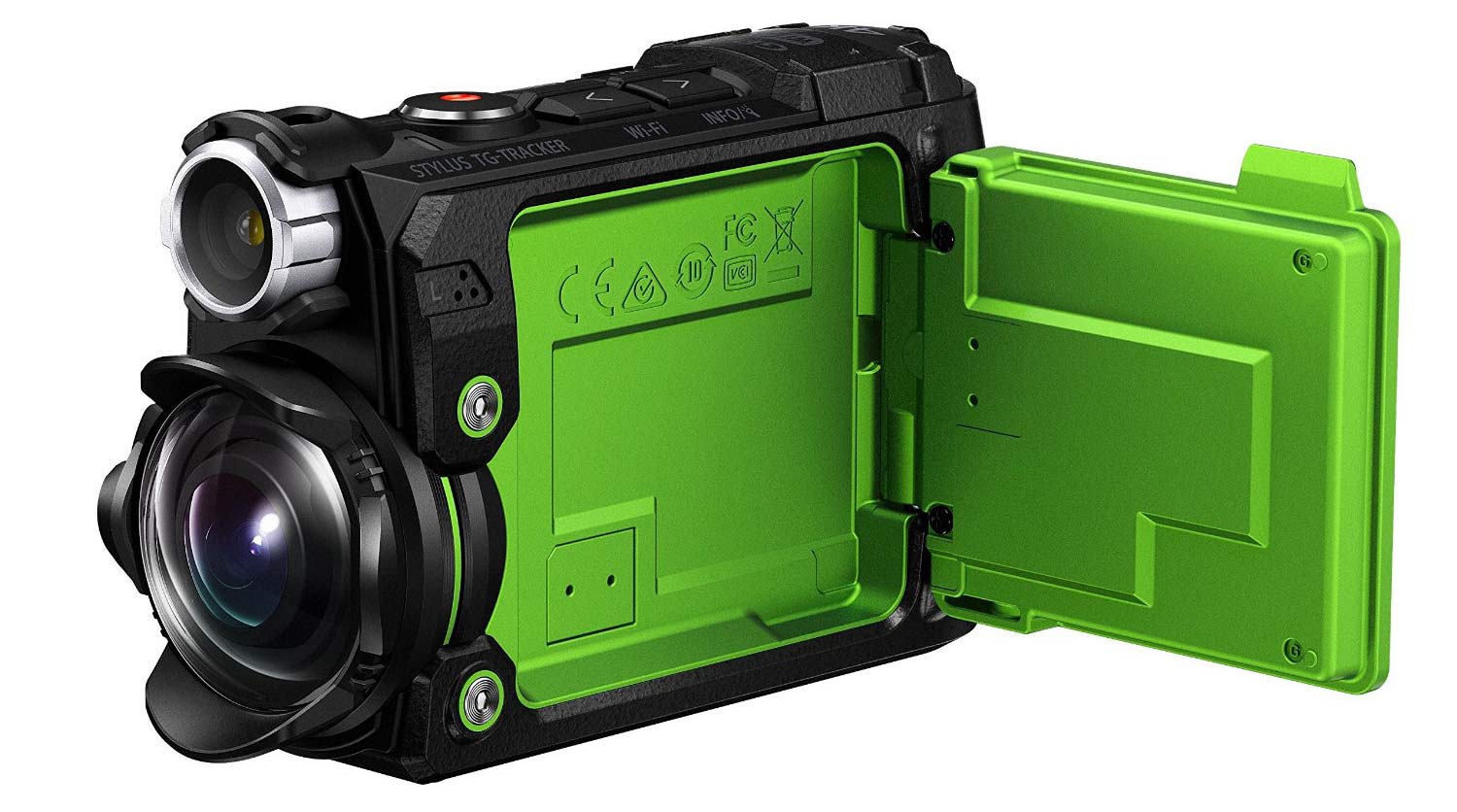
But then I did a more formal test of battery life and found I could shoot 1 hour and 38 minutes of 4K video on a full charge. Once the camera triggers a low-battery warning, you'll have about 10 minutes of 4K recording left. (The camera will record only about 7 minutes of video at 4K before shutting off because the camera caps file sizes to 4GB. However, you can start a new video automatically by using the looping setting.)
That's impressive battery life compared to the Hero4 Black's stated 1 hour and 5 minutes of recording at 4K — especially when you consider that the Olympus also tracks all of that sensor data, which is another pull on the battery.
Bottom line
The Olympus Stylus TG-Tracker is a great action cam for outdoor athletes who live the quantified life and track as much data as possible. But although its image quality is good, I found that it takes some time to get used to some of the camera's features and functions. Though the 204-degree field of view might make for great action shots, it would have been nicefor the camera to have more options for changing the FOV. I'm not particularly bothered by the mini-cam feel of using the pistol-grip mount, but it would be nice to have an integrated record/shutter button on the grip for better ergonomics.
With those gripes in mind, this $349 camera is a good alternative to the GoPro Hero4 Black —not to mention $50 less than the new GoPro Hero5 Black — as long as you don't mind its larger size.
Tom's Guide upgrades your life by helping you decide what products to buy, finding the best deals and showing you how to get the most out of them and solving problems as they arise. Tom's Guide is here to help you accomplish your goals, find great products without the hassle, get the best deals, discover things others don’t want you to know and save time when problems arise. Visit the About Tom's Guide page for more information and to find out how we test products.
